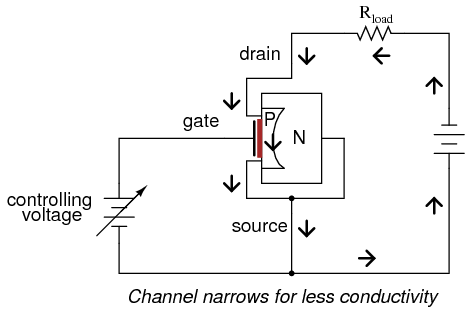As was stated in the last chapter, there is more than one type of field-effect transistor. The junction field-effect transistor, or JFET, uses voltage applied across a reverse-biased PN junction to control the width of that junction’s depletion region, which then controls the conductivity of a semiconductor channel through which the controlled current moves.
What is IGFET?
Another type of field-effect device — the insulated gate field-effect transistor, or IGFET — exploits a similar principle of a depletion region controlling conductivity through a semiconductor channel, but it differs primarily from the JFET in that there is no direct connection between the gate lead and the semiconductor material itself.
Rather, the gate lead is insulated from the transistor body by a thin barrier, hence the term insulated gate. This insulating barrier acts like the dielectric layer of a capacitor, and allows gate-to-source voltage to influence the depletion region electrostatically rather than by direct connection.
Types of IGFET
In addition to a choice of N-channel versus P-channel design, IGFETs come in two major types: enhancement and depletion. The depletion type is more closely related to the JFET, so we will begin our study of IGFETs with it.

